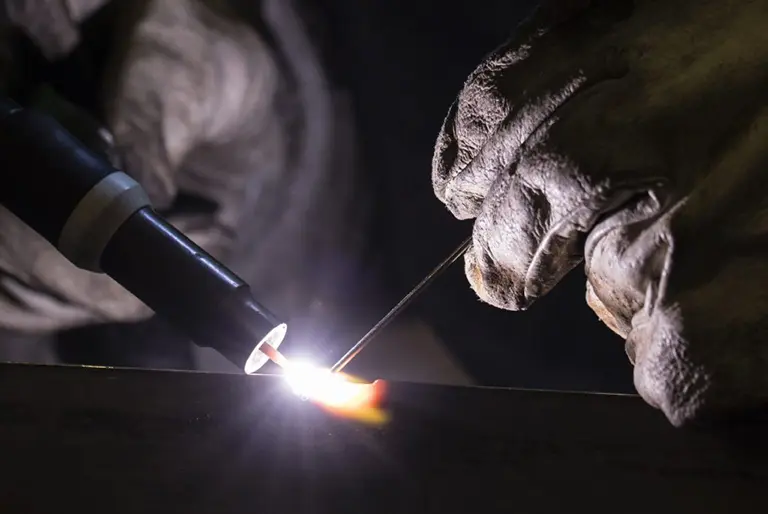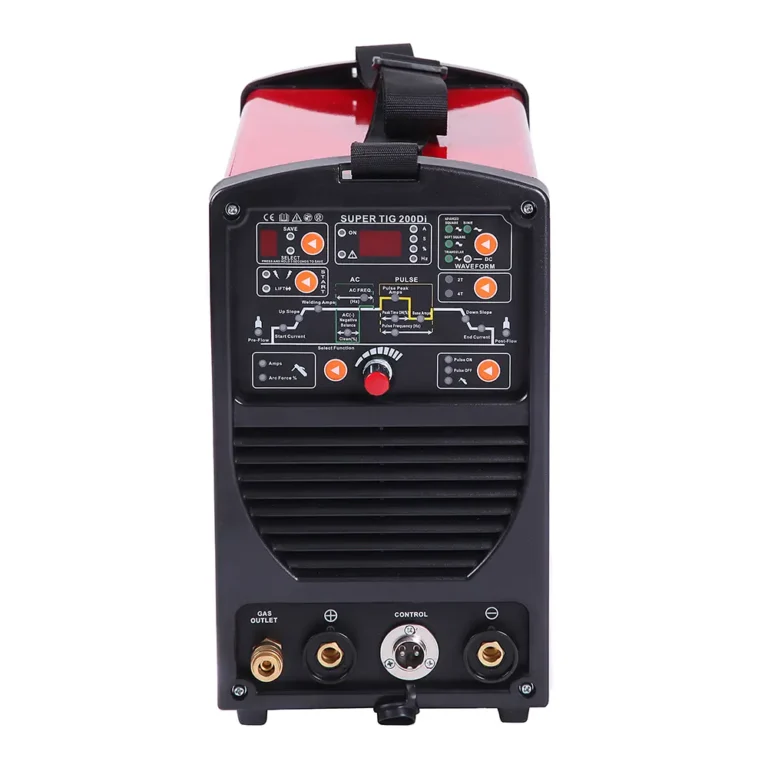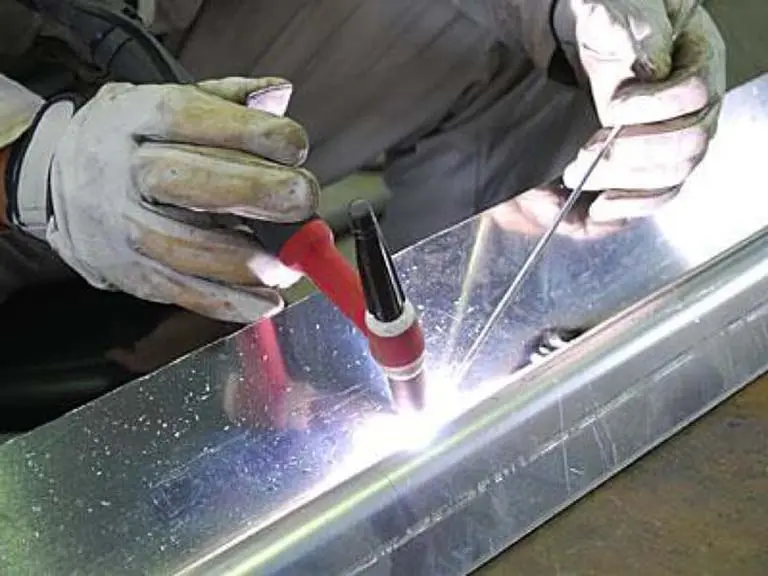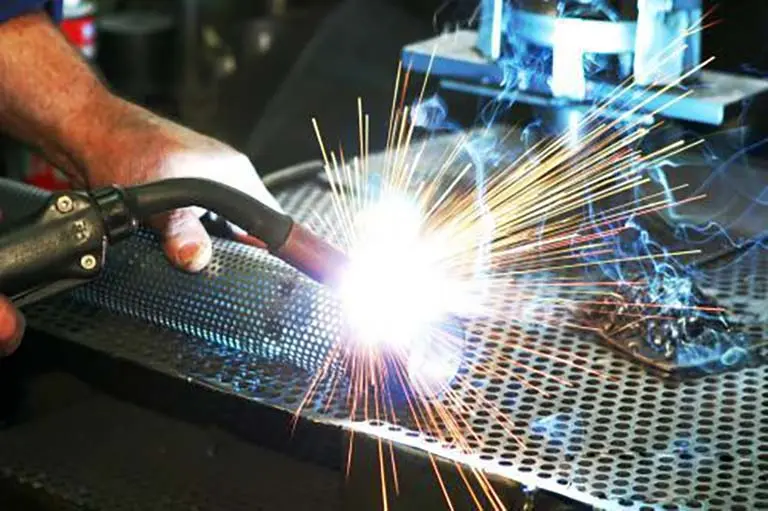ac dc tig welding comparison instructions

ALAND WELDING Let you feel the most sincere welding service
ALAND today will introduce to you what AC DC TIG Welding is and what advantages and effects each has.
1. Advantages and disadvantages of AC DC TIG welding machine
(1)DC advantages:
Easy arc starting, stable arc, high welding quality, fast welding speed, smooth weld surface, small deformation, less oxidation and corrosion;
It has a wide range of welding materials and can weld low carbon steel, high carbon steel, stainless steel, titanium alloy and other metal materials;
The welding position is flexible and can be used for flat welding, horizontal welding, vertical welding, overhead welding and other positions;
Power saving and energy saving. Due to the large inductance of medium and high frequency alternating current, the core and number of turns of the transformer can be reduced, resulting in fast response and low energy consumption;
It has little impact on the power grid. Since the output current of the DC welding machine is stable, it will not cause fluctuations in the power grid and will cause little interference to other electrical equipment.
(2) AC advantages:
Low price. Compared with DC welding machines, AC welding machines have lower purchase and use costs;
Strong durability. Because the AC welding machine has a simple structure and no complicated electronic components, it has a low failure rate and a long life;
Suitable for aluminum alloys. Since the current direction of the AC welding machine changes periodically, it can break the oxide layer on the surface of the aluminum alloy and improve the welding effect.
(3) DC Disadvantages:
The price is high. Compared with AC welding machines, DC welding machines have higher costs and maintenance costs;
It is not suitable for light metals. Due to the high current intensity of the DC welding machine, the welding effect on light metals such as aluminum and magnesium is not good, and it is easy to cause burn-through;
Professional knowledge is required. Since the working principle and structure of the DC welding machine are more complex, more professional knowledge and technology are required to operate and maintain it.
(4) AC Disadvantages:
Arc starting is difficult, the arc is unstable, the welding quality is low, the welding speed is slow, the weld surface is rough, the deformation is large, and there is a lot of oxidation and corrosion;
The welding materials are limited and only alkaline electrodes can be welded. The welding effect of acidic electrodes and high-strength steel is not good;
The welding position is limited, only flat and horizontal welding can be performed, and the welding effect of vertical and overhead welding is not good;
The power consumption efficiency is low. Due to the unstable output current of the AC welding machine, it will cause energy loss and increase the electricity bill;
It has a great impact on the power grid. Because the output current of the AC welding machine will cause fluctuations in the power grid, it will cause great interference to other electrical equipment.


2. Current type:
AC welder: produces alternating current that changes direction periodically. This helps penetrate the oxide layer and is especially suitable for welding easily oxidized metals such as aluminum and its alloys, magnesium alloys and titanium alloys.
DC welding machine: generates direct current, and the direction of the current remains unchanged. For welding materials such as stainless steel, mild steel, alloy steel and nickel alloys, DC welders are generally more suitable.
3. Welding quality:
TIG AC welding machine: Due to the periodic changes in AC current, for some metals such as aluminum, it can better remove the oxide layer and improve the welding quality.
DC welding machine: The welding arc generated by DC current is more stable, which helps to reduce the generation of spatter and slag and improves the welding quality.
4. Welding efficiency:
AC welder: When welding easily oxidized metals such as aluminum and its alloys, more welding time and effort may be required due to the need to penetrate the oxide layer.
DC welding machine: When welding materials such as stainless steel and mild steel, it is usually able to weld with higher efficiency because the welding arc is more stable and there is less spatter.
5. Electrode wear:
AC welder: Due to the periodic changes in AC current, the electrodes wear out relatively quickly.
DC welding machine: The direction of the DC current does not change, so the electrode wears relatively slowly.


6. Different applicable scenarios for AC DC welding machines
AC welding machines are suitable for the following situations:
(1) Aluminum and aluminum alloy welding: Since the oxide layer of aluminum and its alloys is easy to form and has a negative impact on welding, the alternating current of the AC welding
(2) machine can better remove the oxide layer and improve the welding quality.
(3) Magnesium alloy welding: Similar to aluminum, magnesium alloys are also easily oxidized, so AC welders are also suitable for magnesium alloy welding.
(4) Titanium alloy welding: Titanium alloy is sensitive to oxygen and needs to be welded under inert gas protection. The alternating current of the AC welder helps penetrate the oxide layer and improves the welding quality.
DC welding machine is suitable for the following situations:
(1) Stainless steel welding: DC current is usually used when welding stainless steel, because DC current can provide a stable welding arc and help reduce the generation of welding slag.
(2) Welding of low carbon steel and alloy steel: For these materials, DC current can usually provide sufficient welding power and stability.
(3) Nickel alloy welding: Nickel alloy welding usually uses DC current because DC current can provide higher welding temperature and better welding control.




Summary of differences between ac dc tig welding
In general, AC (alternating current) welding machines and DC (direct current) welding machines each have their own unique advantages and applicable scenarios:
AC welding machine is suitable for welding easily oxidized metals, such as aluminum and its alloys, magnesium alloys and titanium alloys. Its alternating current can better remove oxide layers, improve welding quality, and have higher welding depth and penetration capabilities.
DC welding machines are more suitable for welding materials such as stainless steel, mild steel, alloy steel and nickel alloys. The welding arc generated by its DC current is more stable, which helps to reduce the generation of spatter and slag and improves the welding quality. In addition, DC welding machines have less electrode wear and higher welding efficiency.
Therefore, when selecting welding equipment, you need to decide whether to use an AC or DC welder based on your specific welding needs and material characteristics to ensure the best welding results.
Articles you may be interested in:
Introduction To Welding Gloves
Difference Between MIG And TIG Welding
A Must-read For Newbies: GTAW Welding
Basic Knowledge Of Welding Procedure Qualification
Pipe Welding Methods—-A Must-read For Newcomers
Main Operating Points Of Ordinary MIG Aluminum Welding
Safety Operating Requirements For Electric Welding Operations
